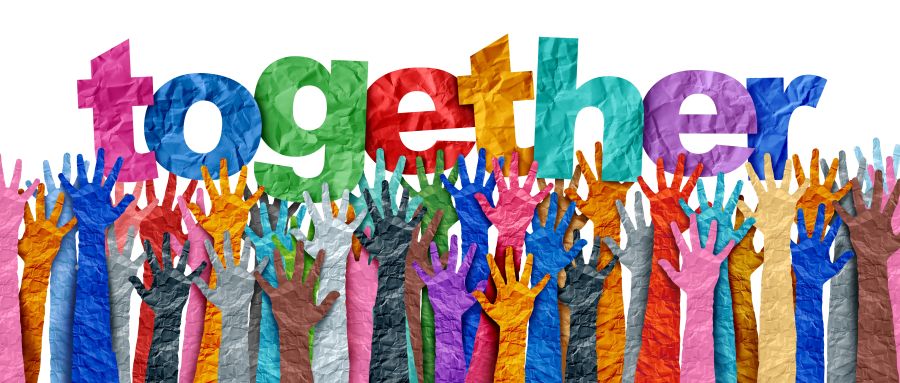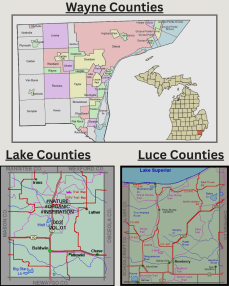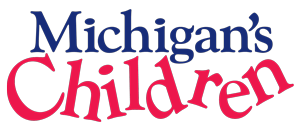
Michigan’s Children has fought for equity since our inception. The word “equity” has recently become controversial, but for us it’s still simple. We’ve always pushed for public policy that’s transparent, effective, and focuses finite resources on those who need it the most.
We know that some Michigan kids have more obstacles to growing up healthy and achieving their full potential – and we know those kids are all over Michigan. One example of this is child poverty. Many people believe child poverty is confined to urban areas and miss the fact that in 2023 Michigan’s Lake County had a higher poverty rate for children under five (21.2%) than Wayne County did (20.6%) and that Luce County in the UP had nearly the same rate (20.2%) as Wayne County.1 No matter where children grow up, living in poverty at any time in childhood has deep and long-term impacts as it’s associated with “substandard housing, hunger, homelessness, inadequate childcare, unsafe neighborhoods, and under-resourced schools.”2 Michigan’s Children believes resources should go to those kids facing the greatest challenges, and we advocate for them no matter which zip code they are growing up in.
Michigan’s Children is also firmly anti-racist. While we wish that a kid’s race or ethnicity didn’t impact their opportunities in life, that just isn’t true in the US – yet. The median White household has $240,120 more wealth than the median Black household.3 In Michigan in 2021, children identifying as Black made up 16.1% of all children in the state, but 32% of children in families living below the poverty line; in contrast, White children made up 65.9% of Michigan kids, but accounted for 45% of children living in poverty.4 And racial disparities exist for almost all non-White child populations in Michigan. For example, almost 9% of Michigan’s American Indian infants are low birthweight – a condition with early and lifelong health implications – compared to 6.5% of White infants.5 In 2024 reading tests (M-STEP), Hispanic/Latino and Black third-grade students scored lower than the state’s average.6 We know these disparities are not due to innate differences in children. Until such disparities no longer exist, Michigan’s Children will continue to use an equity lens in all our work.

Using an equity lens doesn’t mean we don’t advocate for all Michigan kids and families – we do! We focus on policy advocacy that will improve conditions for all Mitten families. We also believe that targeting resources to those most in need – done well – can move our state closer to closing disparities in opportunity and outcomes. Michigan is more than a state – it’s family. If your niece’s kids show up to a winter gathering and are the only ones with no coats – would you give every kid at the gathering a coat? Or would you use your limited resources to at least make sure the shivering kids got one? If you had money for below-zero boots and you had to decide between giving them to nephews in Houghton or in Adrian – you’d probably send them North (we would, too) and make sure your Adrian nephews had something to protect them from the cold-but-generally-milder temperatures near our Southern border.
“…in 2022, for every $100 in wealth held by white households, Black households held only $15.”
At Michigan’s Children we’re trying to avoid politicization of child and family issues. We have always worked with anyone who cares about kids and families – and they’re everywhere. We’re sticking to Michigan common sense, pushing for smart spending on kids and families that has a strong evidence base, and we think about equity because it’s the best use of scarce resources. We fight for our kids and families – all of them – whether they’re from Bad Axe in the thumb, in Michigan’s big cities (Detroit, Grand Rapids and Lansing), or from the UP. All kids and their families matter, and we fight for good public policy that will make Michigan stronger today and in the decades to come.


- United States Census. (2023). Small Area Income and Poverty Estimates. Data retrieved from: https://www.census.gov/data-tools/demo/saipe/#/?s_geography=county&s_measures=aa&s_state=26&s_county=26163&s_district=
- American Psychological Association. (May, 2024). Mental Health Effects of Poverty, Hunger and Homelessness on Children and Teens. Retrieved from: https://www.apa.org/topics/socioeconomic-status/poverty-hunger-homelessness-children
- Perry, A., Stephens, H., & Donoghoe, M. (January 9, 2024). “Black Wealth Is Increasing, But So Is The Racial Wealth Gap.” Brookings Institution. Retrieved from: https://www.brookings.edu/articles/black-wealth-is-increasing-but-so-is-the-racial-wealth-gap/#:~:text=The%20largest%20disparity%20in%20wealth,concentrating%20ownership%20in%20white%20communities.
- Michigan League for Public Policy. (August, 2023). 2023 Kids Count In Michigan Data Book & Profiles. Retrieved from: https://mlpp.org/2023-kids-count-in-michigan-data-book-and-profiles/
- Great Lakes Inter-Tribal Epidemiology Center. (2021). American Indian/Alaska Native Health in Michigan, Minnesota & Wisconsin. Retrieved from: https://www.glitc.org/2020/wp-content/uploads/2022/02/AIAN-Health-in-MI-MN-and-WI-2021.pdf
- Dellinger, H., Lohman, I., & Wilkinson, M. (August 28, 2024). “M-STEP Results Give Michigan’s First Look At Achievement For Kids Who Started School During COVID.” Bridge Michigan. Retreived from: https://www.chalkbeat.org/detroit/2024/08/28/2023-mstep-results-show-third-and-fourth-graders-behind-compared-to-peers/
